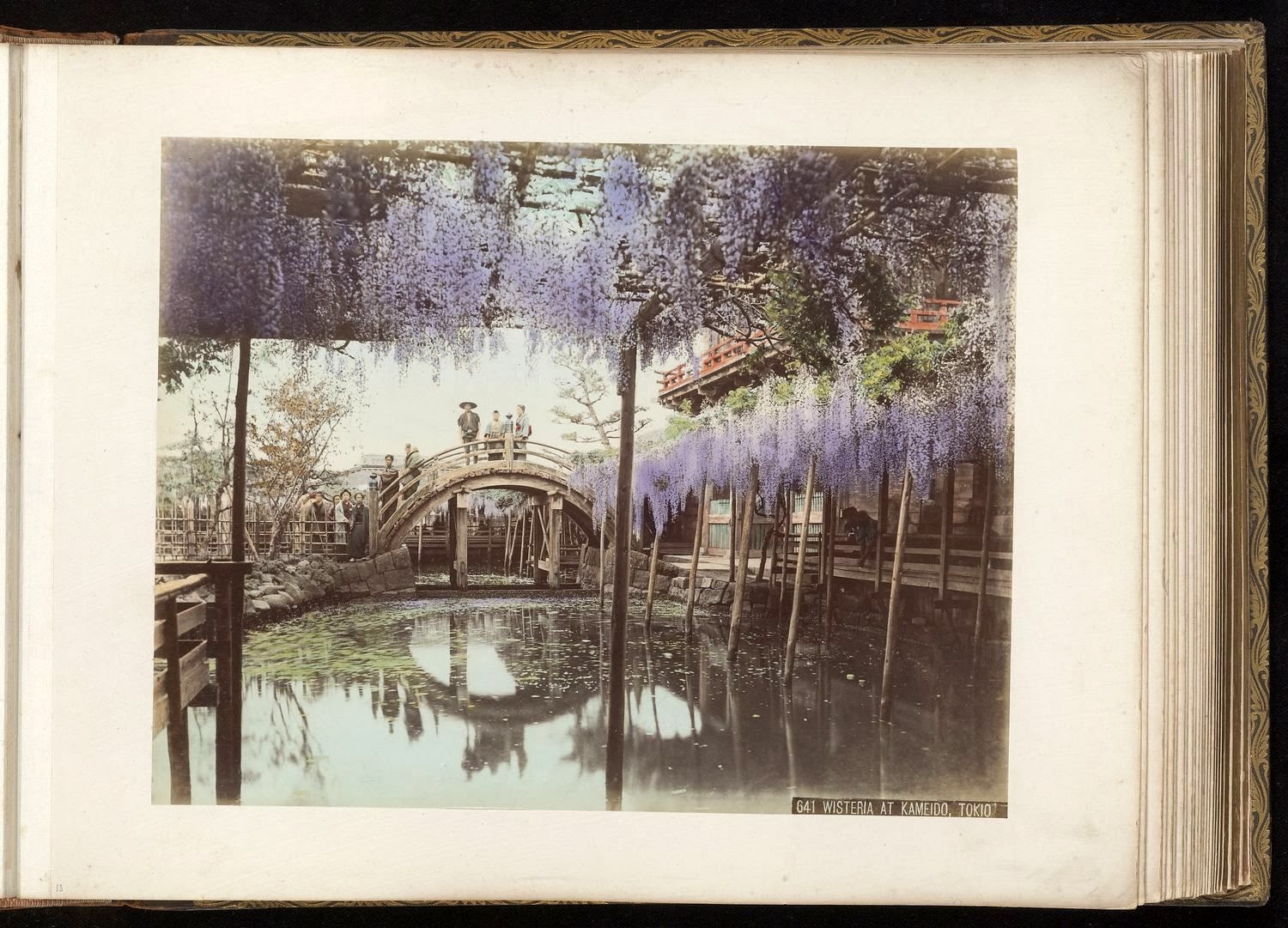Japan by Kusakabe Kimbei (日下部 金兵衛) (1841 - 1934)
Het album bevat een stempel op p. 2: "K. Kimbei, Photo grapher, Honcho-Dori, Yokohama"
Het album bevat een rijk gedeco reerd gelakt houten voor- en achterplat; het is beschilderd en bevat details van ivoor en parelmoer
Kusakabe Kimbei, one of the most accomplished Japanese photographers of his time, operated a studio in Yokohama from the early 1880s until 1913. Kusakabe Kimbei worked with Felice Beato and Baron Raimund von Stillfried as a photographic colourist and assistant before opening his own workshop in Yokohama in 1881 in the Bentendori quarter, and from 1889 operating in the Honmachi quarter. He also opened a branch in the Ginza quarter of Tokyo. As the protégé of von Stillfried, Kusakabe Kimbei continued the tradition of the psychological studio portrait and recorded scenic views of the country while he developed his own Japanese sense of photography. Like postcards today, his work was collected by tourists and exported for sale as curiosities to those who could not visit Japan. He stopped working as a photographer in 1912-1913.
About Mio Wakita
Mio Wakita has successfully defended her doctoral dissertation “’In the guise of elusive veracity’: a visual construct of Meiji femininity in Kusakabe Kimbei’s souvenir photographs in the age of visual modernity,” at the University of Heidelberg in October 2010, and will be joining the Cluster of Excellence as postdoctoral fellow of research project C12 "The Asian Sea" in April 2011. Her doctoral research focused on the analysis of the visual construction of Japanese femininity in the Meiji souvenir photographs by the Japanese photographer Kusakabe Kimbei. Given the transculturality of the souvenir photographs and their semantic ambiguity, she investigated their visual encodings by the Japanese photographer in the context of indigenous visual practices, with special attention to critical issues such as female visibility in the mid- and late Meiji period, social identity of photography models, and visual typologies. She is currently editing her doctoral thesis for publication.
Whereas her doctoral thesis largely concentrated on investigating the visual “encodings” by one specific Japanese studio to reveal one aspect of multi-facetted meaning of souvenir photographic images, the focus of her new research project will lie on “decoding” the meaning of these transcultural image products in the given historical context, stressing the flow of images across the sea. The project investigates how the original signification of Meiji femininity represented in nineteenth-century Japanese souvenir photographs was perceived, manipulated, and embodied by their Western female recipients. The forms of reception by Western women – the target objects of investigation – range from interior decoration, photography albums to sartorial performance before the camera for private photography sessions. The aim of this research project is not only to evaluate the cultural impact of the economic image transactions; it also explores how the images of femininity represented in mid-Meiji souvenir photography transformed the original signification encoded by Japanese photographers when decoded by Western female consumers. In addition, defining Western women as the target group of analysis sheds light on the complexity in the pattern of reception of Japanese souvenir photographs, marking a significant shift from the monolithic “male West vs. female East” model of transcultural relations in understanding cultural consumptions to a more nuanced one. By way of this approach, she aims to elucidate the intricate structure of semantic asymmetry inherent in the transcultural life of the souvenir photographs of Japanese femininity, opening up a wider perspective in the scholarship on the nineteenth century transcultural relationship between Japan and the West.
Her areas of interest include forms of the modernity in Japanese visual culture, construction of Japonisme in the 20th and 21th centuries, and Japanese cultural politics from the 19th century to the present day.


































































